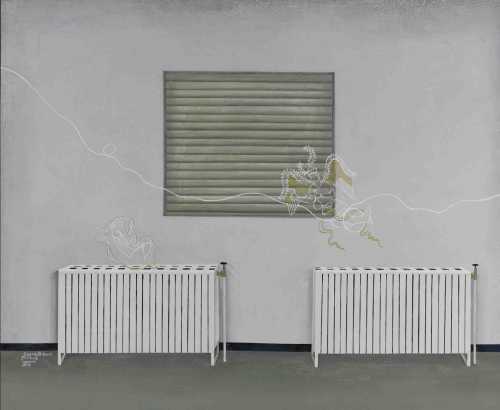About Roxana Manouchehri
Roxana Manouchehri, a contemporary painter, was born in Tehran. She started her career by teaching drawing and painting to children in the school of literature and art of the Iran Broadcasting Organization. Then she entered the Tehran University of Art and completed her bachelor's degree in painting in 1997. The same year of graduation, she exhibited her paintings for the first time individually at Haft Samar Gallery in Tehran. She also continued her graduate studies in painting at the same art university and received her master's degree in 2002. She worked as a lecturer at the Tehran University of Science and Technology three years after graduation. After holding exhibitions in collaboration with Assar and Mah Gallery for three years, she took an artistic residence in Seoul for a while in 2008. She participated in two SIPA Art Fairs and the Kiaf International Art Fair in the capital of South Korea and held her first foreign solo exhibition entitled "Feeling of Expanse" She set up in Changdong Art Studio in South Korea. After returning to Iran, she presented the results of her trip to Korea in a solo exhibition titled "Korean Pride" in the Tehran Assar Gallery. In the following years, she traveled to countries such as Ireland, Finland, Spain, etc., for artistic residency projects and added to the richness of her experiences. In 2021, her works were exhibited by Roya Khajavi Projects at Volta Art Fair in New York. She also has experience attending Art Dubai.
Manouchehri has always discussed Eastern and Western painting traditions in her career's different periods. In her early years, she had a representational approach to painting and created images of women's faces. In some of this period's works, these figures have been combined with a geometrical background reminiscent of knots and Iranian architectural motifs. Figures of women are placed behind a layer of monochromatic abstract motifs (such as purple). At the beginning of the 2000s, she created realistic pictures of the house's interior, with elements of Qajar painting, such as the pattern of an angel or a king (drawn with white side lines) located in its corners. She creates a dual space by combining these opposing forces, the Iranian and Western representation systems. Although it can be said that these forces reach a compromise and harmony in Manochehri's paintings and find a harmonic ratio. In her next collection of works (2010), she follows this duality in another direction by placing stately frames next to each other, on one side of which are paintings belonging to the Christian image tradition (medieval paintings), and on the other side are Iranian paintings. This duality is compatible and harmonious because Iranian painting (from the Tabriz school onwards) owes some of its characteristics to the Christian tradition. In the following periods, she went through different experiences. Still, in the works she created in 2020, she turned to the same initial idea: combining characteristics of Iranian painting and Western representational painting, including features such as depth and leveling, ornamentation, and objectivity ... in a frame. The presence of today's motifs, such as jets and airplanes, in these paintings makes the mentioned contrast more prominent. In another period of Manouchehri's paintings, single faces of men and women are combined with motifs such as insects and weapons.
The Most Expensive Artwork
At Auctions
First Attendance
26 October 2011
# Attendance
2
# Artworks
2
Average Realized Price
5,163 USD
Average Min Estimate
4,087 USD
Average Max Estimate
5,522 USD
Sell-through Rate
100%
Average Growth of Artwork Worth
7.738%
Timeline
How To Be Iranian? (or Not) exhibition
3 November
From the Gold Land exhibition
15 April
Nostalgic Identity exhibition
25 January
Enigma exhibition
6 December
اولین دوره حراج تهران auction
22 May
Modern and Contemporary Arab, Iranian and Turkish Art Part II auction
26 October
Encounter exhibition
25 February
